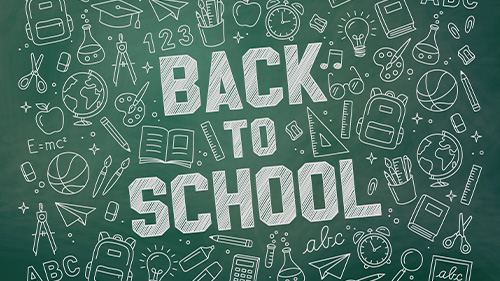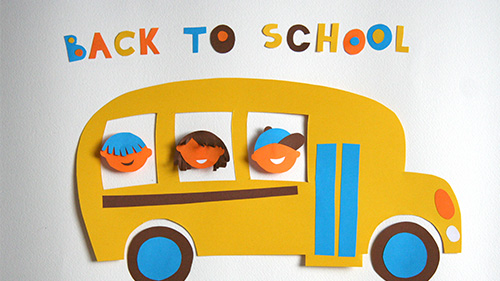Top 3 Tips: Setting Your School Year Up for Success
For students, the back-to-school checklist mainly consists of the standard list of supplies, the requisite instructional materials, and maybe a new...
AP & Honors Mathematics
Explore Wiley titles to support both AP and Honors mathematics instruction.
Literacy Skills & Intensive Reading
Connections: Reading – Grades 6–12
Empower student success with a proven intensive reading program that develops strong reading skills in striving readers.
Drama, Speech & Debate
Basic Drama Projects 10th Edition
Build students’ confidence and competence with comprehensive, project-based theatre instruction.
Literature
Connections: Literature
Support learners as they study dynamic, relevant texts and bring the richness of diverse voices to students through literature.
Literature & Thought
Develop critical thinking, reading, and writing across literacy themes, genres, historical eras, and current events.
Language Arts
Vocabu-Lit® – Grades 6–12
Help students build word power using high-quality contemporary and classic literature, nonfiction, essays, and more.
Connections: Writing & Language
Help students develop grammar, usage, mechanics, vocabulary, spelling, and writing and editing skills.
Reading/English Language Arts
Measuring Up to the English Language Arts Standards
Incorporate standards-driven teaching strategies to complement your ELA curriculum.
English Language Learners
Measuring Up for English Language Learners
Incorporate research-based best practices for ELLs with an approach that includes a focus on language acquisition strategies.
Mathematics
Measuring Up to the Mathematics Standards
Incorporate standards-driven teaching strategies to complement your mathematics curriculum.
Foundations
Measuring Up Foundations
Help students master foundational math skills that are critical for students to find academic success.
Science
Measuring Up to the Next Generation Science Standards
Give students comprehensive NGSS coverage while targeting instruction and providing rigorous standards practice.
Assessment
Measuring Up Live
Deliver innovative assessment and practice technology designed to offer data-driven instructional support.
For a better website experience, please confirm you are in:
School leaders in today’s educational environment recognize that the school year does not begin on the first day of classes. It starts with careful planning months in advance. Now more than ever, with school disruptions, it is critical to put in place educational tools and supports for students as soon as possible.
Here are some suggestions for back-to-school preparations
To effectively support students starting on day one, it is important for administrators to anticipate the total enrollment at school and by grade level. Having a complete picture of each student’s most recent academic data is also crucial.
Student data helps to determine not just how individual students are progressing but also how subgroups (e.g., Bilingual/ESL, Special Education, Gifted and Talented) of students are doing.
This information impacts budget allocations, staffing decisions, and scheduling.
Budget responsibilities of a school administrator include purchasing instructional resources and securing the right number of materials for students and teaching personnel. When administrators have a solid understanding of key student data, they can make informed decisions about the best, high-quality core and supplemental educational products. Additionally, administrators can determine whether differentiated materials, such as standards-based resources for on-, above-, and below-grade level is needed for students.
Administrators may begin buying educational equipment, resources, services, and supplies on July 1 or September 1, depending on when the new fiscal year begins.
Instructional material storage areas can quickly get out of control if they are not prioritized. The end of the school year is the perfect time for administrators to take inventory and reorganize storage areas so new materials can be received efficiently during the summer.
Some tips for organizing storage areas include:
Collaboration with key instructional staff during the summer months offers opportunities for collaboration to review student data, budget priorities, and curriculum materials distribution.
Additional topics for discussion include:
The school calendar for 2022–2023 is another important topic for collaboration that deserves an in-depth look. A strategic calendar is essential to getting things done in the new school year.
It is important to review and adjust the calendar on a regular basis to plan school events and activities, such as teacher planning times, parent-teacher conferences, and Back-to-School nights.
Having an updated, visible, and organized calendar makes the school run more smoothly.
Communication is essential for an administrator to connect students, teachers, families, and other stakeholders to the school’s mission. It is important to determine how, when, and to whom information will be shared.
Below are a few Back-to-School communication items that can help start the year off right:
Before a new school year is the best time to get realigned, inspired, and excited about what is possible and attainable.
Many students struggle because they lack the foundational skills needed for grade-level standards. Foundational skills underpin the rigorous standards that are the norm in today’s classrooms. Researchers suggest teaching prerequisite skills at time of need. There is a window of opportunity for teaching and learning; the task is to know when it appears and exploit it.1 Much like building background information sets students up for learning success, teaching foundational skills as they are needed increases students’ ability to connect to increasingly difficult skills.
The more you know about your students, the better able you will be able to accelerate their learning. But having students with learning loss or unfinished learning puts added pressure on teaching grade-level curriculum. Experts are calling for a shift in thinking from wholesale placing students in remedial programs to teaching pre-requisite skills at time of need. Building both background knowledge and foundational skills makes learning new and more difficult skills easier.
Building foundational skills at time of need is most effective when it incorporates recommendations made by cognitive researchers. Mayer and Moreno (2003) suggest the following:
“Eliminate distractions to keep students focused.”
“Simplify the content by segmenting it into steps.”
“Simplify the task by lowering the readability and problem complexity.”
These recommendations have shown to be effective for all students, especially for those who struggle with learning. Keeping these recommendations in mind will help to accelerate learning for all students.
References

For students, the back-to-school checklist mainly consists of the standard list of supplies, the requisite instructional materials, and maybe a new...

It’s that time! The school year is beginning and you’re ready to welcome up to 180 new learners into your classroom. Whether you’re in your first...
.jpg)
While most early literacy development occurs in elementary school, teachers in middle and high schools continue shaping students' reading abilities,...

If you’ve ever waited longer than you thought humanly possible for a complete sentence to appear during a writing assignment (only to discover...

Laura Kebart (English Language Arts Teachers) shares strategies for 6-8 ELA teachers for creating rubrics that center student improvement. {%...

Creating a sense of belonging at school is essential for every student, but it is especially impactful for those with disabilities. Students with...

Join Laura Kebart, CEO of Language Arts Teachers, to discuss strategies for implementing stations in your classroom! During this presentation you'll...

Educational studies have proven time and time again that learning loss is a real phenomenon.

You feel it, I feel it, we all feel it: group dynamics are different now. I started this article with a rather long lament about it. We don’t have as...

The art of teaching can be enhanced by storytelling and great storytelling begins with great stories. Psychology has many of these as it is the study...

When I think about the success stories of my middle school emergent bilingual learners, I can’t help but smile. What about you? Sure, there were...

The summer break is winding down, and soon you'll be setting up your classroom for another year of learning adventures. Whether you're a first-year...

